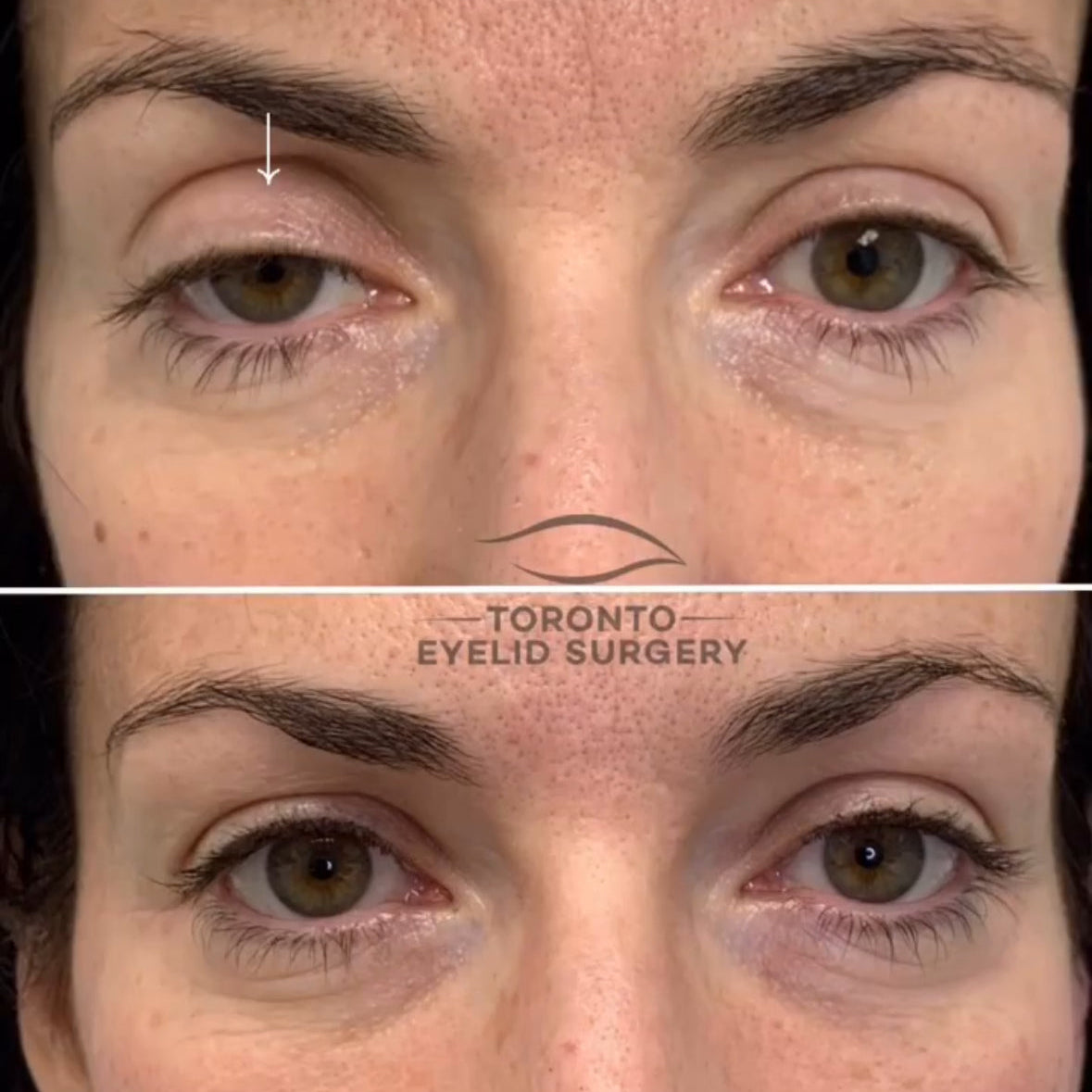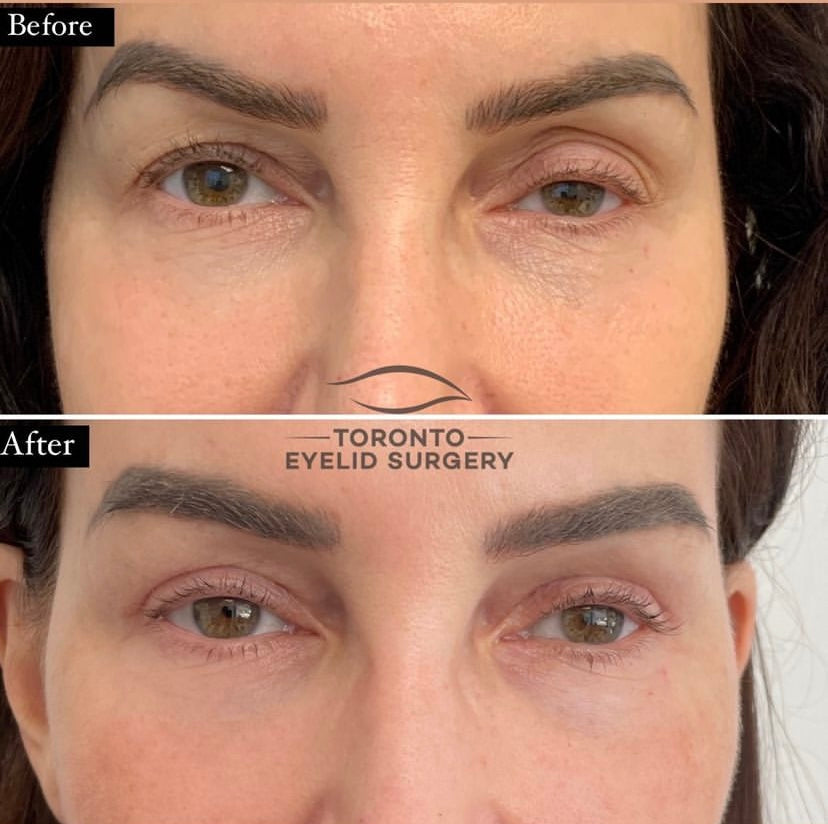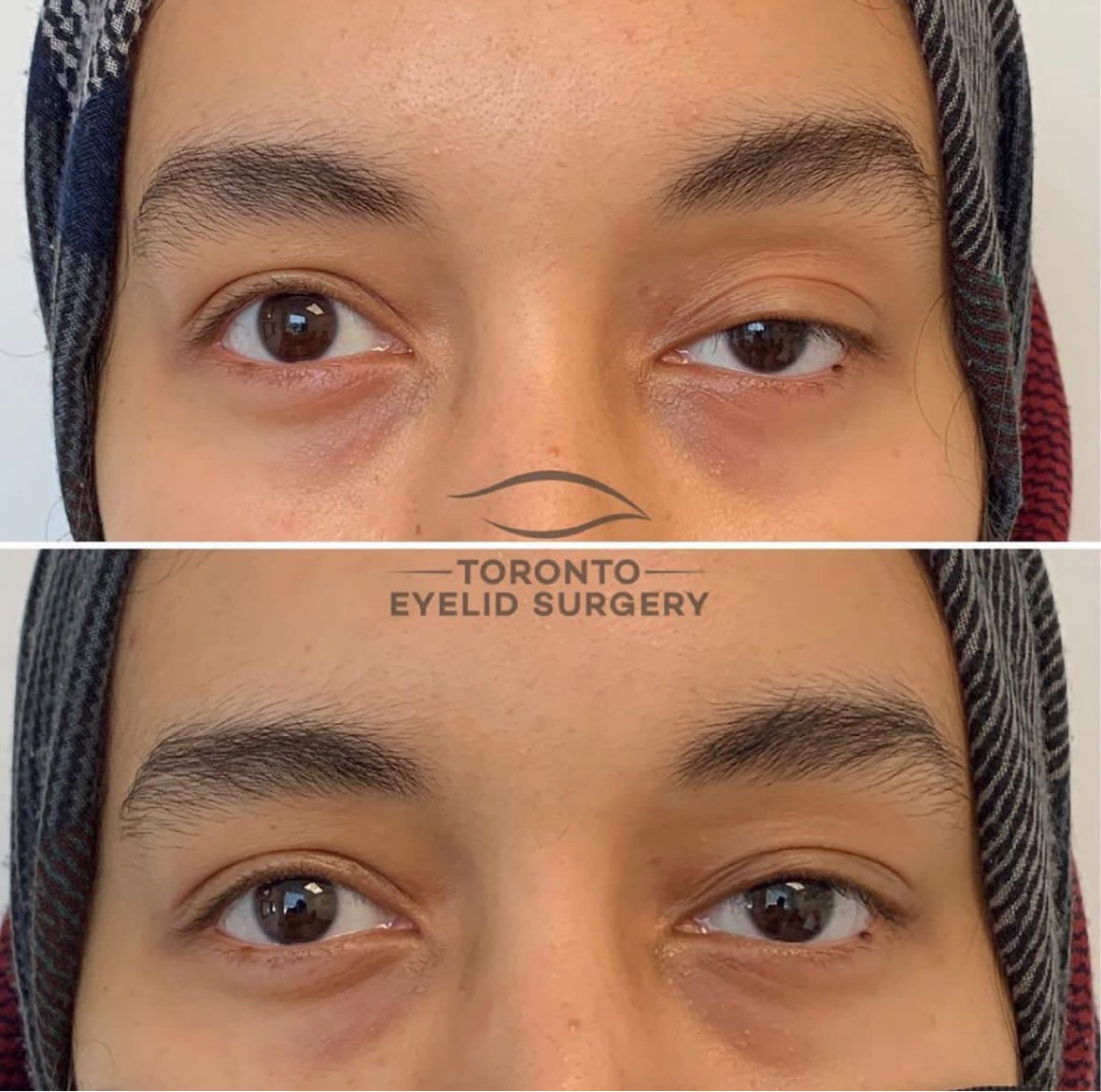What is Ptosis or Droopy Eyelid Repair?
Ptosis (pronounced "TOE-SIS" – the "p" is silent) or droopy eyelid repair is a specialized surgical procedure designed to correct drooping of the upper eyelid, which can affect one or both eyes. This condition is caused by weakness or dysfunction of the levator muscle, the primary muscle responsible for lifting the eyelid. Unlike upper blepharoplasty, which focuses on removing excess skin and fat for cosmetic rejuvenation, ptosis surgery restores proper eyelid function by tightening or repositioning the levator muscle. Patients with ptosis often appear constantly tired or asymmetrical, and in severe cases, the drooping lid can partially block vision. Ptosis can be congenital (present from birth) or develop over time due to aging, previous eye surgery, trauma, or neurological conditions. The effects of ptosis correction surgery can last for many years, depending on the underlying cause of the condition.
Dr. Maleki, as an expert in both functional and cosmetic eyelid surgery, customizes ptosis repair based on the severity of muscle weakness to ensure symmetry and natural-looking elevation of the eyelids. For patients with both excess skin and muscle weakness, ptosis repair can be combined with upper blepharoplasty to achieve a more youthful and refreshed appearance while maintaining proper eyelid function.

Am I a good candidate for Lid Ptosis Repair?
You may be a good candidate for ptosis correction if you:
✔︎ Have drooping upper eyelids that partially cover your iris (the colored part of your eye)
✔︎ Experience eye strain, headaches, or fatigue from constantly lifting your eyelids
✔︎ Have noticeable asymmetry, where one eyelid sits significantly lower than the other
✔︎ Feel that sagging upper eyelids make you look tired or older than you are
✔︎ Frequently raise your eyebrows to compensate for heavy eyelids
✔︎ Struggle to keep your eyes fully open, especially toward the end of the day
✔︎ Have had previous eyelid surgery but still experience drooping
If one or more of these signs apply to you, Dr. Maleki, a leading oculoplastic surgeon, can evaluate your condition and recommend the best approach to restore balance, function, and a refreshed appearance.
If you’re thinking of having Ptosis Repair surgery, here’s what you need to know.
Lid ptosis repair is tailored to each patient based on the severity of their ptosis and the strength of the levator muscle (the muscle responsible for lifting the eyelid).
The two primary techniques used include:
➊ External Ptosis Repair (Levator Advancement)
- The procedure involves tightening or reattaching the levator muscle through an incision in the eyelid crease.
- The incision is hidden in the natural eyelid fold, resulting in minimal visible scarring.
- If excess skin exists, the surgery can be easily combined with an Upper Blepharoplasty.
➋ Internal Ptosis Repair (Müller’s Muscle Resection)
- The procedure is performed from the inside of the eyelid, requiring no external incision.
- This is the preferred technique for patients who do NOT have any excess skin where an upper lid blepharoplasty would be required
- A portion of Müller’s muscle is tightened to elevate the eyelid by a few millimeters.
Duration and Recovery
✔ The procedure typically takes 30 to 60 minutes per eyelid and can be done under local anesthesia with IV sedation for maximum comfort.
✔ Patients can go home the same day with post-operative care instructions.
✔ Swelling and bruising usually subside within 1-2 weeks.
✔ Stitches (if used) are removed within 7 days.
✔ Most patients return to light activities within 7-10 days, though full healing may take several weeks.
BEFORE/AFTER Ptosis Repair surgery




Why Choose Dr. Maleki for Your Ptosis surgery?
Ptosis repair is a highly specialized procedure that most plastic surgeons do not perform, as it requires advanced training in eyelid anatomy, functional eyelid surgery, and an aesthetic eye to create beautifully precise and symmetric eyelids. Unlike standard cosmetic eyelid surgery, which primarily focuses on skin and fat removal, ptosis repair involves delicate adjustment of the muscle, which controls eyelid elevation. Achieving a natural, balanced result requires not only technical expertise but also a deep understanding of eyelid proportions and facial harmony. This level of precision is why ptosis surgery is best performed by an oculoplastic surgeon—a specialist trained in both ophthalmology and plastic surgery of the eyelids.
Dr. Maleki is among the few surgeons in Canada with the expertise to perform ptosis repair, ensuring that patients achieve both functional improvement and aesthetically refined results while minimizing risks such as asymmetry, overcorrection, or difficulty closing the eye. His reputation for excellence has made him a trusted expert among both patients and physicians, with many plastic surgeons and other medical professionals referring their ptosis patients to him for the highest standard of care.


